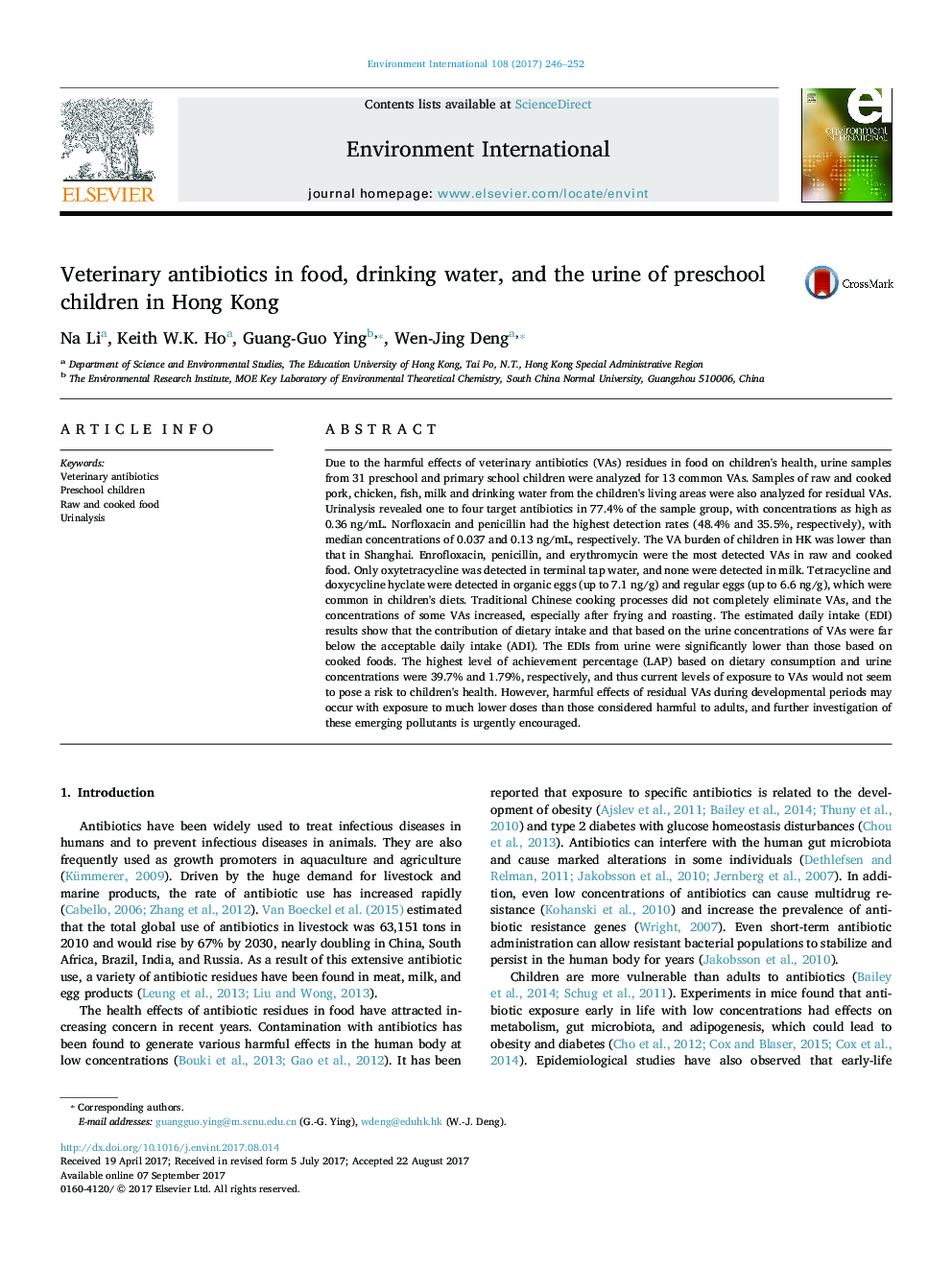| کد مقاله | کد نشریه | سال انتشار | مقاله انگلیسی | نسخه تمام متن |
|---|---|---|---|---|
| 5748213 | 1619022 | 2017 | 7 صفحه PDF | دانلود رایگان |
- Thirteen VAs were detectable in the urine of 77.4% of primary school children in Hong Kong in the survey.
- Norfloxacin and penicillin had the highest detection rates in the urine.
- Enrofloxacin, penicillin, and erythromycin were the most detected VAs in raw and cooked food.
- Antibiotic residues cannot be totally eliminated by traditional Chinese cooking processes.
Due to the harmful effects of veterinary antibiotics (VAs) residues in food on children's health, urine samples from 31 preschool and primary school children were analyzed for 13 common VAs. Samples of raw and cooked pork, chicken, fish, milk and drinking water from the children's living areas were also analyzed for residual VAs. Urinalysis revealed one to four target antibiotics in 77.4% of the sample group, with concentrations as high as 0.36Â ng/mL. Norfloxacin and penicillin had the highest detection rates (48.4% and 35.5%, respectively), with median concentrations of 0.037 and 0.13Â ng/mL, respectively. The VA burden of children in HK was lower than that in Shanghai. Enrofloxacin, penicillin, and erythromycin were the most detected VAs in raw and cooked food. Only oxytetracycline was detected in terminal tap water, and none were detected in milk. Tetracycline and doxycycline hyclate were detected in organic eggs (up to 7.1Â ng/g) and regular eggs (up to 6.6Â ng/g), which were common in children's diets. Traditional Chinese cooking processes did not completely eliminate VAs, and the concentrations of some VAs increased, especially after frying and roasting. The estimated daily intake (EDI) results show that the contribution of dietary intake and that based on the urine concentrations of VAs were far below the acceptable daily intake (ADI). The EDIs from urine were significantly lower than those based on cooked foods. The highest level of achievement percentage (LAP) based on dietary consumption and urine concentrations were 39.7% and 1.79%, respectively, and thus current levels of exposure to VAs would not seem to pose a risk to children's health. However, harmful effects of residual VAs during developmental periods may occur with exposure to much lower doses than those considered harmful to adults, and further investigation of these emerging pollutants is urgently encouraged.
Veterinary antibiotics (VAs) in drinking water, milk, and raw and cooked food and in the urine of preschool children were surveyed in Hong Kong. Tetracyclines, quinolones, sulfonamides, macrocyclics, and penicillin are widely distributed in pork, chicken, and fish and that they are also detectable in the urine of 77.4% of children. Antibiotic residues cannot be totally eliminated by traditional Chinese cooking processes. All samples studied demonstrated that the EDIs based on diet consumption or urine were all far below the ADI.245
Journal: Environment International - Volume 108, November 2017, Pages 246-252
